Consumers think with both their rational and emotional brains. Study after study says that when we buy, it’s for emotional reasons. Logic comes into play when we try to justify the money we have (or are about to) spend — especially when we’re giving into our wants.
Here is what one Psychology Today article says about our shopping habits.
- fMRI neuro-imagey shows that when evaluating brands, consumers primarily use emotions (personal feelings and experiences) rather than information (brand attributes, features, objective facts).
- Advertising research reveals that emotional responses to an ad has greater influence on a consumer’s intent to buy an ad (more so than the ad’s content).
- According to the Advertising Research Foundation, ‘likeability’ is the measure that best predicts whether an advertisement will increase a brand’s sales.
- Positive emotions toward a brand have far greater influence on consumer loyalty than trust and other judgments.
- Emotions are one reason why we gravitate toward brand name products over generics — big brands pump a steady stream of advertising dollars into branding initiatives.
Okay. The findings make sense. In fact, they’re common sense and have been instrumental to marketers for years. But how can businesses harness emotions to connect with their consumers? Harness the following example tacts. We’ll show you how.
Positive Emotions = Long-Term ROI
Emotions are the key drivers behind our everyday decisions. They’re what keep us motivated to get up and go to work at 6 AM. It’s how we convince ourselves to run that extra mile on the treadmill. Similarly, emotions are what convince us to do business with the brands that stand out to us.
The problem is that marketers are on a completely different wavelength. What makes us happy? Clicks, pageviews, time on site, and high conversion rates.
What marketers need to keep in mind is that conversion optimization is a process, not a moment. It’s the whole marketing funnel — not just the five minutes that it takes for your customers to sign a contract or commit to a sale.
Your company needs to prioritize long-term relationships above sales.
Researchers at the University of Michigan wanted to find out how positivity could affect a negotiation scenario. In the study, participants had to coordinate the final arrangements of booking a catering service for an upcoming wedding reception. The business manager of this catering company (a professional actor), explained that the quoted price of $14,000 would need to be increased by close to $3,000 due to market pricing fluctuations.
The study revealed that even a subtle change in pitch could dramatically impact the outcome of the conversation. People who heard a positively toned pitch were twice as likely to accept the deal as people who heard a negatively toned pitch.
Zappos is a brand that thrives on positive energy. The company aims to make its customers extremely happy — and it’s not just to get them in the door. Zappos wants to keep people happy through the entire sales cycle.
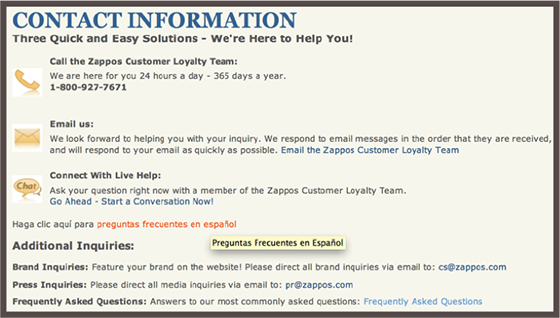
Zappos transformed what most companies consider to be a cost (call centers) into a positive customer experience. Zappos reps are not required to follow a rigid script. Instead, they’re encouraged to live in the moment and let their personalities shine through.
Zappos is famous for sending customers flowers, granting surprise upgrades to overnight shipping, and staying on the phone with some customers for hours.
“Sometimes people just need to call and talk”, said Shaea Labus, the employee who was on a call with a customer for almost 10 hours. “We don’t judge, we just want to help”.
Make your customers happy, and you’ll win their business for life. Your competition won’t stand a chance.
Engaging the Senses
Visual communication is the heart of online marketing. That doesn’t mean, however, that your company is limited to two-dimensional communication.
One way to harness the senses is to appeal to your audience’s imagination. Help them imagine an experience with your company’s products. One option? Sound. Talk to your customers by producing a branded explainer video or by hosting a webinar.
You don’t need to create something expensive or overly complicated, either. When Spotify launched in the U.S., the company created a very simple visual and soundtrack:

Coastal, an ecommerce store that sells contact lenses and glasses, has a ‘try-it-on’ feature that helps customers see what they’d look like in new glasses.

Brand Personality
A personality is something that we usually give our friends, family members, coworkers, and acquaintances. These are qualities that form a person’s distinctive character.
Personalities are in the eye of the beholder. We love people because of their personalities. We hate people because of their personalities. We find some personalities wonderful — and others, we find horribly obnoxious.
It’s weird to think that brands can have a personality. And yet, we talk about ‘brand personalities’ all the time.
What Is A Brand Personality?
A brand personality is the set of attributes that give an organization a distinct character. Some brands have incredibly strong and unique personalities. Others have weaker personalities (or no personalities at all). Usually, these personalities revolve around a distinct set of attributes.
Great personalities don’t happen by accident. They’re planned well in advance.
Moosejaw is a great source of inspiration. This sports and outdoors goods retailer is fun-loving, experimental, adventurous, and has an amazing sense of humor. Their marketing team takes the time to try new branding initiatives (like mystery gifts and freebies) and also deploys subtle tactics of making fun of the company’s own legalese. Check out the company’s return policy, for instance. It’s hilarious. It’s a “living will”.
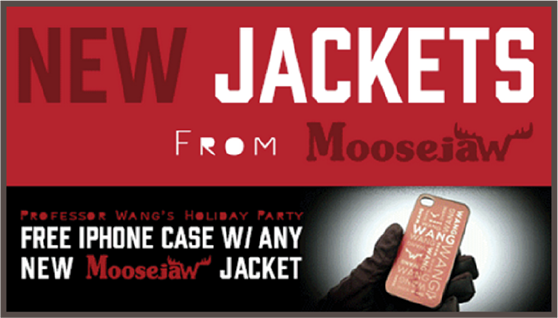
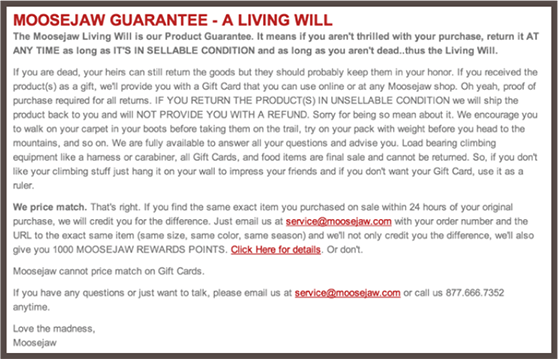
Where Do Brand Personalities Come From
A brand personality can be whatever its leadership wants it to be — fun loving, serious, professional, or any combination of characteristics.
What’s most important is that the company defines it up front. This process should capture the entire time — not just a select few managers within the organization.
The reason why is that it’s your team members — at the ground level — who will ultimately put this carefully designed personality into action. These individuals will plan new product features, business development tactics, and customer service offerings around this extremely important identity.
As an example, take a look at KISSmetrics. The company strives to be analytical, educational, helpful, to-the-point, metrics-driven, aggressive, and (kind of nerdy). These core brand personality traits are readily apparent throughout the site — on the homepage and especially on the blog where the company is sharing tips, how-tos, and detailed best practices in web analytics.
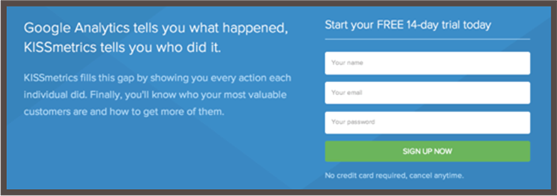
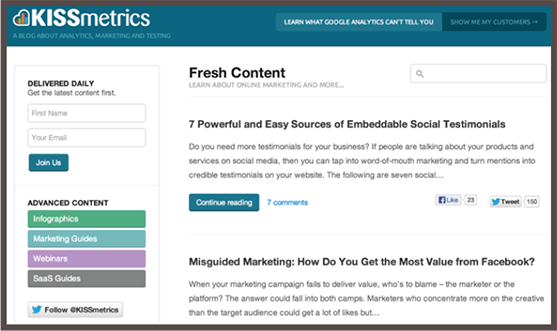
Who Is Responsible For Your Company’s Brand Identity?
he short answer? Everyone.
The personality that you assign to your brand should touch every aspect of your business from marketing copy to social media, customer emails, and product descriptions. Every single person on your team — executive leaders, mid-managers, and entry level team members should be able to clearly define and embody who your brand is.
In many ways, your team members are your company’s brand identity. In building out your team (hiring) and forming strategic partnerships, you need to hire people who live and breathe your brand’s core values. When your team is committed to a shared and focused set of values, your company will have an easier time.
Culture, marketing, and design are elements that go hand-in-hand. For these disparate business goals to converge, a clear strategy needs to be defined from the top-down.
How Do You Define Your Company’s Brand Identity?
A brand identity isn’t something that will materialize into thin air. The process takes careful planning and consideration. You’ll need to hire a team, and if you have the funds, you may need to hire a consultant. This core business asset will unify your product, marketing, design, and customer communication. In other words, it’s really important. You’re not wasting time by overthinking it.
Here are step-by-step guidelines to help you get started:
- Come up with a big list of keywords that represent your brand image (right now). Invite your entire team to participate in this process. You can use a whiteboard, Google doc, or spreadsheet to sketch out the details — whatever you think is most effective — to share ideas.
- Come up with a big list of keywords that describe how you’d like your brand to be perceived. Repeat the process of involving your entire team. Compare your two lists and examine the gaps between who you are now and who you want to be.
- Trim down the big list of keywords to 2-3 key phrases. This process will be excruciating, but there is no way that you can rely on dozens of words to describe your brand. At the end of the day, human beings will be processing this information. If you overwhelm folks with more information than they can handle, you’ll end up wasting time.
- Create a message architecture. A what? This is a hierarchy of communication goals that clarify your brand’s most high-impact attributes. These attributes and terms reflect a broader discussion to establish concrete, shared terminology (not just abstract concepts). There is no cookie-cutter approach to crafting your brand’s message architecture. Pick an approach that best aligns with your company’s goals. Just make sure that you’re communicating (and organizing) your brand’s identity clearly.
- Create a style guide. This document will translate all of your ideas into a concrete set of instructions for your marketing team. This (short and sweet) document will unify your company’s brand messaging. It takes a few sentences to keep your company on the same page.
Here is an example of a simple brand styleguide:
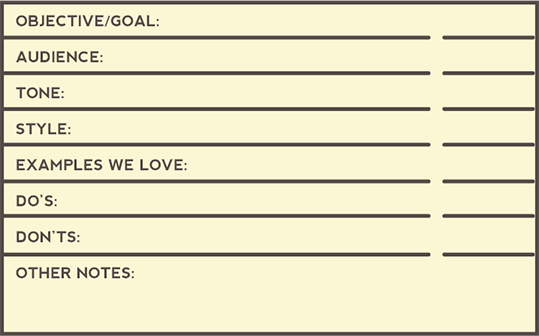
The concept is just that simple. The less information your team has to filter through, the more they can focus on creating a cohesive marketing strategy.
Avoiding Cheesiness
Emotions can easily transition from effective to downright cheesy. It’s a fine line. One moment, your brand is doing a great job building a rapport. The next moment? Audiences are making fun of your company’s over-the-top marketing message.
How do you avoid this?
- Embrace honesty within your organization. Make it easy for your team to deliver blunt and honest perspectives.
- Collect feedback from a variety of audiences. Don’t just listen to your organization’s baby boomers. Ask your Gen Xers and Gen Yers to share ideas too.
- Face test your marketing message with a group of customers that you trust. Ask this ‘focus group’ to deliver blunt and honest feedback.
- Remember the needs of your audiences. Baby boomers, for instance are more receptive to cheesy marketing messages than other groups. Gen Yers? They’ll tear your marketing apart.
Cheesiness is in the eye of the beholder. The best way to connect with your audience is to put your marketing team in their shoes.
Creating Viral Campaigns
Some brands make viral marketing look so darn easy. Dollar Shave Club, for instance, used a hilarious marketing video to build a customer base. Overnight. Literally.
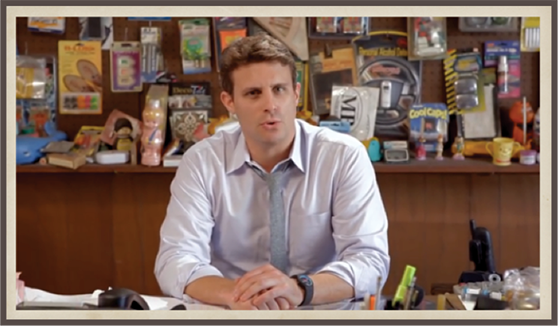
The thing is, viral marketing campaigns are more formulaic than they look. While performance isn’t guaranteed, brands can optimize their chances of success by striking an emotional chord with their customers.
In a Harvard Business Review article, Kelsey Libert and Kristin Tynski explain how marketers can increase the chances of a creating a viral campaign:
- Make people care (and share). Engage them with a powerful message — without trying to sell your brand. Heavy use of branding can push viewers away. They’ll jump to disregard the content as spammy and quickly lose interest. Don’t manipulate your audience’s emotions. Respect them, and make an effort to understand their core needs.
- Understand the emotions that drive the success of viral content. Patterns are a core part of human nature. That’s why Libert and Tynski conducted a study of 30 of the top 100 images of the year from imgur.com (as voted on the top social sharing site Reddit). Negative emotions were less commonly found in viral content than positive emotions. However, viral success was still positive when these negative emotions came with an element of anticipation and surprise. Certain emotions were common in viral content (and others were uncommon). Common emotions included: curiosity, amazement, interest, astonishment, uncertainty, and admiration.
- Build your brand into an emotional message without being salesy. The key is to think about how your company, products, and services relate to your target audience. Make sure to select a topic that underscores the position of your brand.
- Pay attention to the public good.
The world is bigger than your brand. Focus on adding value to the world, and your customers will notice.
The Unspoken Power Of Delight
Delight is a force that is infinitely more powerful than any marketing message. It’s the experience of watching a toddler use a smartphone for the first time. It’s what happens when you walk into your favorite boutique (after a tough day) and are surrounded by racks of beautiful items and great music. It’s when Zappos surprises you with overnight shipping.
Some leaders stereotype delight as something fluffy. The thing is, it’s not. It ties directly into your company’s bottom line. It’s probably true that you can’t measure the correlation between exposure to purple lighting in the Virgin Airlines check-in area and profitability. But honestly, who cares? We know that delight influences sales. It’s a waste of time to chase numbers and micromanage the details. Focus on growing your business by creating delightful brand experiences.
Delight doesn’t happen on accident. It’s carefully crafted into the core functional areas of your business:
- Product
- Marketing
- Account management/client services
- Aesthetics
Delight can strike a chord with the following emotions:
- Humor
- Inspiration
- Admiration
- Awe
- Surprise
The problem with delight is that it is — by definition — a nebulous concept. Your finance and revenue teams will second guess your pitches around the topic. Your sales and marketing teams might be on board, but your number crunchers? Not so much. When asked about your plans, you need to distill your goals into a set of tangible steps. Here are the steps needed to create a delightful brand experience:
- Evaluate your customers’ pain points. Examine their online and offline behavior, research what they need, and piece together the touch points that illustrate their unique conversion paths. Talk to them directly, and build brand personas around the answers that you receive.
- Define your brand. Take the research that you did in step 1, and translate the information into a concrete set of action items. Distill what you’ve learned into one or two sentences about your company.
- Start brainstorming action-items that deliver your intended brand experience.
Branding is something that your company should measure on the macro-level. Pay attention to general trends in your customer data:
- Repeat Customers: How many customers are coming back to do repeat business with your company?
- Word of Mouth Recommendations: Shares through social media can help you quantify this important concept. It’s not a perfect 1:1 relationship; however, shares are a strong proxy for how many people are engaging with — and ultimately recommending your brand.
- Average Order Values: Take a look at how much customers are spending with each individual transaction. A positive sign is when you see growth over time.
- Lifetime Customer Values: Are your marketing initiatives increasing the worth that your company is generating over the long-term?
- Market Share: How does your brand compare to its top competitors? Are customers sticking with your company or making the jump to other organizations?
Delight is something that you can craft in tandem with your brand’s personality. Delight is the customer-centric piece, and personality is the brandcentric piece.
Staying Ethical
There is a fine line between courting and manipulating customers. Remember that emotions can make us vulnerable. No matter how strong we think we are, we’re still very complex. In appealing to emotions, brands are constantly walking the line. It is extremely important to treat your customers with the utmost respect.
Fear is one example of a powerful yet heavily abused emotion.
In some instances, fear is appropriate. Especially when it comes to vital health concerns, companies/brands/nonprofits have an obligation to inspire emotion. This ad from the CDC, for instance, is designed to stop people from smoking:

The main element that influences whether a person is likely to take action to avoid a threat is efficacy — a person’s perception as to whether or not they can do anything about the threat.
Marketers and business owners can literally scare their customers into making a purchase. But is it ethical? Probably not — if you’re using fear tactics, then definitely no. If you’re communicating something truthful (and possibly saving your customers from a big problem), then fear is ok.
The key is to give your brand a value test. Is your marketing message adding or extracting value from the world? If you’re extracting value (like a leech), you should probably change your approach.
Logitech is an example brand that strikes this balance well. Here is an ad for a home video security system — it’s based around the questions that parents are already asking. In speaking to its audience’s fears, the marketing message is comforting because it shows worrisome parents that they are not alone in their fears.
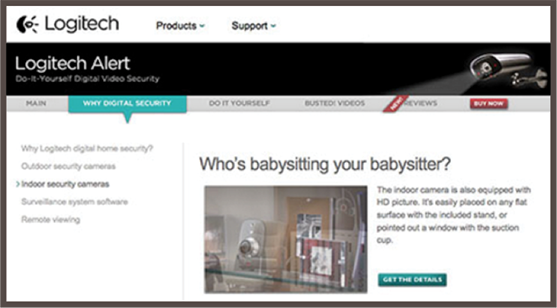
Logitech also ran a “busted” video campaign to expose prospective customers to credible, real threats. Unethical? Not so much. But the campaign may make you consider buying a Logitech camera.
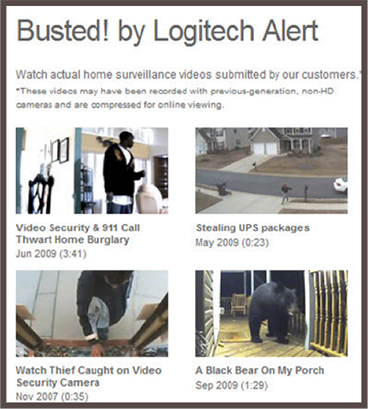
Here’s an example of an ad that takes fear too far. The ad reads “If you aren’t totally clean, you are filthy”.

The ad is questionable because it’s unreasonable. Yes, our hands are covered in germs. But are we covered in disgusting cockroaches, and are we allowing those nonexistent cockroaches to crawl all over our children? Probably not.
The thing is, many people have phobias for cockroaches and other insects. They are likely terrified and jolted after looking at this very unrealistic ad.
A point that we emphasized earlier is that emotions expose our greatest vulnerabilities. Marketers should treat carefully and thoughtfully. You never know who you’ll possibly make very, very angry.
Build Emotions Into Your Brand Community
Social media is a great way to encourage customers to talk about how they’re thinking and feeling — especially about your company. It’s important to keep this dialogue open — you’ll promote word of mouth marketing around your brand. A potential issue arises, however, when customers are angry about a negative experience.
Many companies will jump to deleting negative comments or moving all customer communication into a private forum.
Don’t do that.
Instead, if a problem arises, use the opportunity to show that there is a real person behind your brand. Apologize, make the situation better, and try to offer an amicable solution. Don’t let a complaint or negative review scare you away from the experience of talking with your customers in a public forum. Instead, be authentic and show that you care. Reciprocate emotions with emotions, and stay calm — even if the conversation gets heated.
FedEx did a great job striking this balance with this summer, a video of a careless package delivery driver went viral on YouTube. The company released an official video statement to basically say, “I’m sorry. We’re on it”.
Own your mistakes. If all else fails, make it a point to show that you care.
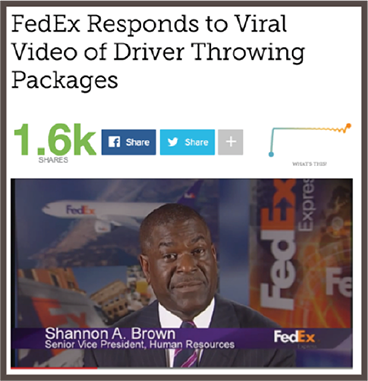
Key Takeaways
- Consumers buy because of what they’re feeling — not necessarily what they’re thinking.
- Emotions are valuable for marketing. Marketers and business owners need to make sure that they’re connecting with audiences on a human-to-human level.
- Emotions are difficult to quantify. Diehard finance people will be skeptical of your marketing initiatives. If you listen to them, however, your company will miss out on valuable relationship-building experiences.
- A company should take the time to establish its brand personality upfront, from the top down. Style guides and message architecture templates can help your organization create a centralized workflow for all of your company’s marketing channels.
- Remember that your company’s culture will also define your brand. Your teammates are the people who will execute your company’s brand strategy at the ground level — in every aspect of your business from customer communication, sales, and social media. Make sure that you’re hiring the right people who embody your company’s core traits and values.
- You can measure delight, brand loyalty, and customer happiness by looking at macro-level ROI metrics including long-term customer value, average order value, company market share, and social media mentions.
- Emotions make us vulnerable. Don’t be a jerk. Be considerate of the fact that there are highly public consequences to your actions as a brand.
- Social media is a platform for your customers to share what they are thinking and feeling. Don’t inhibit this very healthy dialogue. It’s perfectly normal for customers to feel frustrated and angry sometimes. Don’t feel pressure to squash what they’re saying. Focus on solving the problem, discussing the problem openly, and connecting with your audiences in a very human way.
